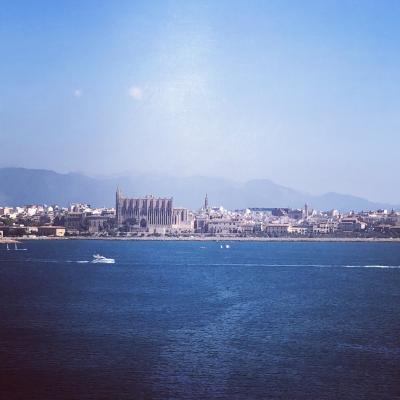How have the walls affected the availability and distribution of public spaces and amenities in Palma?
Similar Topics
palma walls impact
public space distribution
historic core plazas
compact urban environment
suburban parks development
modern urban planning
pedestrian-friendly zones
dual public amenities
The walls surrounding Palma have played a significant role in shaping the availability and distribution of public spaces and amenities within the city. Historically constructed as fortifications, these walls delineated the city’s boundaries for centuries, effectively concentrating development and public areas within their perimeter. As a result, many of the city's key public plazas, parks, and cultural sites are found in the historic core, where space was often limited but highly organized. This concentration has contributed to a compact urban environment where public spaces are accessible but sometimes constrained by the density of buildings and narrow streets.
Over time, as Palma expanded beyond its medieval walls, newer public amenities and parks were developed in the suburbs and peripheral neighborhoods. The walls, while no longer serving a defensive purpose, still symbolize the division between the dense historic center and the more open, often larger public spaces outside. Modern urban planning in Palma has sought to balance this, preserving green areas and creating new recreational facilities beyond the old boundaries to meet the needs of a growing population. Consequently, residents and visitors find a diverse array of amenities both inside and outside the former walls, though the character and scale of these spaces differ markedly.
The historic walls have also impacted the distribution of public services and amenities by limiting vehicular circulation into the old town, encouraging pedestrian-friendly zones and small-scale public squares within this area. These conditions foster a more intimate social environment but can place pressure on available open spaces. In contrast, the outskirts offer larger parks and sports facilities designed for more active recreation. Thus, while the walls have historically confined Palma’s core public spaces, they have indirectly supported a dual pattern: a charming, densely packed historic center complemented by expansive, modern amenities on the city’s edges. This dynamic continues to influence how Palma’s residents and visitors experience the city's public realms today.
Over time, as Palma expanded beyond its medieval walls, newer public amenities and parks were developed in the suburbs and peripheral neighborhoods. The walls, while no longer serving a defensive purpose, still symbolize the division between the dense historic center and the more open, often larger public spaces outside. Modern urban planning in Palma has sought to balance this, preserving green areas and creating new recreational facilities beyond the old boundaries to meet the needs of a growing population. Consequently, residents and visitors find a diverse array of amenities both inside and outside the former walls, though the character and scale of these spaces differ markedly.
The historic walls have also impacted the distribution of public services and amenities by limiting vehicular circulation into the old town, encouraging pedestrian-friendly zones and small-scale public squares within this area. These conditions foster a more intimate social environment but can place pressure on available open spaces. In contrast, the outskirts offer larger parks and sports facilities designed for more active recreation. Thus, while the walls have historically confined Palma’s core public spaces, they have indirectly supported a dual pattern: a charming, densely packed historic center complemented by expansive, modern amenities on the city’s edges. This dynamic continues to influence how Palma’s residents and visitors experience the city's public realms today.
🧩 Related Questions
Related Question
How does the Posidonia oceanica contribute to the underwater ecosystem near Mallorca?
Related Question
How does giant reed compare to other common plants in Mallorca in terms of growth and utility?
Related Question
Can biodynamic farming methods reduce the need for external chemical inputs more effectively than organic farming?

